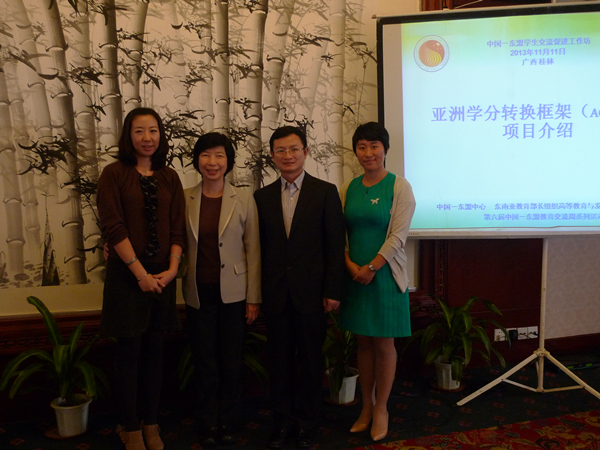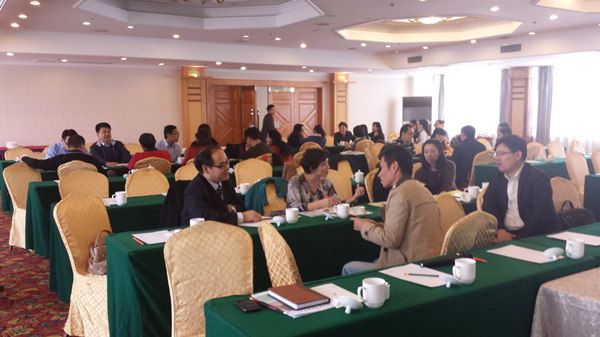On 11-12 November 2013, the ASEAN-China Students Mobility Promotion Workshop was held in Guilin, Guangxi Autonomous Region. The workshop, hosted by ASEAN-China Centre (ACC) together with Southeast Asian Ministers of Education Organization-Regional Center for Higher Education and Development (SEAMEO RIHED), is one of the follow-up activities of the 6th China-ASEAN Education Cooperation Week, and also one of the cooperation programmes between ACC and SEAMEO according to the MoU signed by the two parties. Eighty representatives, including officials from ACC and SEAMEO RIHED, Directors and officials from the provincial education authorities of Tianjin, Jiangsu, Guangdong, Zhejiang, Sichuan, Guangxi, Guizhou and Hainan, and Directors from International Departments of 51 Chinese universities, attended the two-day Workshop.

The Workshop introduced two programmes aiming at promoting regional students mobility, namely ASEAN International Mobility for Students Programme (AIMS Programme) and Academic Credit Transfer Framework for Asia (ACTFA). AIMS Programme is designed to support student mobility among member countries in the form of scholarship. ACTFA aims to establish a common and feasible credit transfer system for universities. The two programmes were both initiated and promoted by SEAMEO RIHED, and Chinese provincial education authorities and universities are welcomed to participate in the two programmes.

Mr. Wang Daoyu, Deputy Director of Education, Culture and Tourism Division of ACC, made introduction of ACC and its activities in education, and elaborated on the purpose to hold the Workshop, which includes bridging universities in ASEAN and China, promoting students mobility between the two sides, and contributing to the Double 100,000 Student Mobility Goal set by the leaders of China and ASEAN. Director of SEAMEO RIHED, Dr. Sauwakon Ratanawijitrasin, made a presentation on the background and development of the two programmes. Dr. Liu Yang, an expert from Beihang University, introduced the development of credit transfer system and its function in promoting internationalization of universities.
Officials from the above-mentioned eight provincial education departments introduced education cooperation between each province and ASEAN. Representatives from 51 Chinese universities made an in-depth discussion on the status, difficulties and challenges of ASEAN-China student exchanges, and challenges and suggestions to the credit transfer system between China and ASEAN.
Representatives expressed gratitude to ACC for providing such a platform for communication and cooperation, and pledged to continue to participate in education activities held by ACC, so as to promote ASEAN-China education cooperation and exchanges.